Is every citizen of the Russian Federation able, without hesitation, to answer the question: “What is depicted on paper rubles?” That is, of course, everyone knows that Russian bills on both sides contain symbols of the largest cities. But who will remember what is depicted, say, at 50 rubles? And what symbols of Khabarovsk adorn the largest banknote to date - 5,000 rubles? What denomination banknote captures the events of 2014? Despite the fact that money falls into our hands every day and several times a day, far from everyone can answer these questions. Meanwhile, the banknotes of Russia are a real excursion through the iconic cities of our homeland.
A bit of history
Banknotes of Russia did not always carry images of city attractions. Once upon a time banknotes depicted portraits of great people. This tradition is still inherent in many countries. Russia began to change world traditions since 1991, embarking on multiple reforms affecting Russian money. Banknotes underwent significant external changes and by 1997 took a modern look, drawings of architectural monuments appeared on them.

Not everyone will notice that almost all of the new banknotes in Russia contain images of Christian shrines. This fact is not accidental - as the Central Bank conceived. With the permission of the Moscow Patriarchate, religious symbols were depicted on banknotes so that the person holding the money in their hands would receive prayer. But the uninitiated do not even realize that every day Christian talismans carry in their purses blessed by the church for prosperity.
Five rubles
This bill is no longer issued by the Central Bank, but so far remains a full-fledged means of payment. On a green background are the walls of the Novgorod Kremlin on one side and the Millennium of Russia memorial on the other.
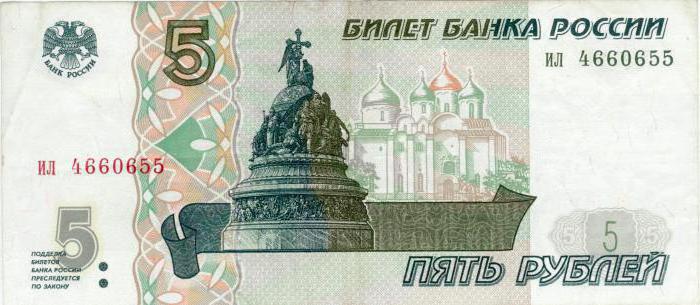
Every citizen of the country knows about the St. Sophia Cathedral, against which the monument stands, because it is the oldest Slavic church in Russia.
Ten rubles
On front side of the bill there is an image of the Communal Bridge of Krasnoyarsk, which was once considered the longest in Asia. On the same side is the Paraskeva Chapel - the famous Christian symbol of the city.
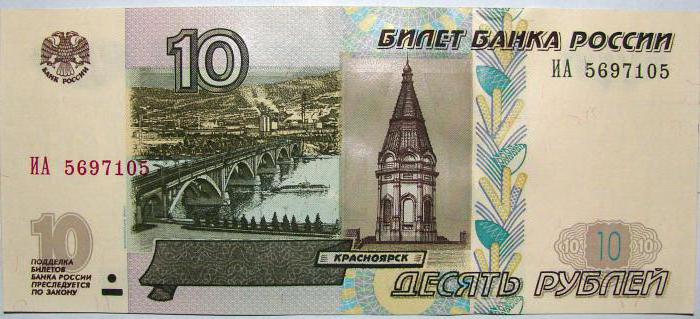
The reverse side is decorated with a significant power plant for Russia - the Krasnoyarsk hydroelectric station. By its power, the station is not inferior to any other hydroelectric power station in Siberia.
All the symbols of Krasnoyarsk on a banknote of 10 rubles are printed in dark green colors.
Fifty rubles
The blue banknote carries the image of a beautiful maiden - the Neva, a symbol of the cultural capital of Russia. In the background is the Peter and Paul Fortress.

From the back of the bill, a view of the embankment of Vasilyevsky Island with the Exchange and the Rostral Column opens. It is no coincidence that Igor Krylkov, developing the design of new banknotes, chose this particular type as a symbol of the city, because the Vasileostrovskaya arrow is the most picturesque place in St. Petersburg.
One hundred rubles
One hundred rubles denomination is presented by the capital of the country and the Bolshoi Theater.

The theater itself is printed in light brown tones, with the chariot of the beautiful Apollo in the foreground, while the back of the bill is dedicated to Theater Square. These symbols do not need a special presentation, Big - he is Big.
Five hundred rubles
City of banknotes of 500 rubles - Arkhangelsk. Obverse is a statue of Peter the Great. The monument has an interesting fate: at one time it did not appeal to the Soviet regime, and it was thrown off the pedestal. But the monument was not destroyed, it was simply left on the bank of the Dvina, where he spent 13 years.Then, in 1948, the statue was again placed in its rightful place on the embankment, where it remains to this day. In Taganrog there is an exact copy of the monument.
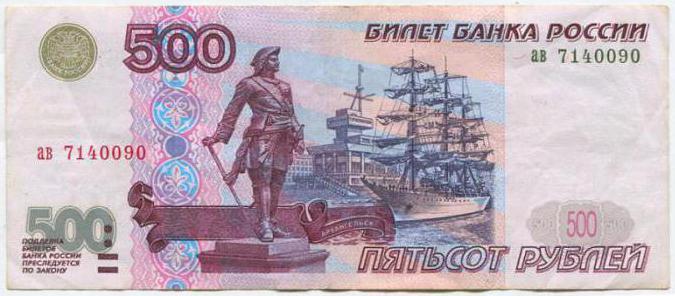
The back of the bill depicts the Solovetsky Monastery, which once served as a place of exile for political prisoners. Today it is a UNESCO protected area,
Thousand rubles
Modern paper money appeared as a result of the 1997 denomination. Then the reform took place, and during the exchange the citizens were given out banknotes of Russia with a face value of a thousand times less than those being handed over. The Central Bank specially issued new banknotes, on which three extreme zeros were removed. But there was no replacement for banknotes of 1,000 rubles; the samples before and after the reform were no different.

The bill is dedicated to ancient Yaroslavl. The walls of the city Kremlin and the monument to Yaroslav the Wise are depicted on a greenish background. The reverse side is decorated with the Church of St. John the Baptist.
Five thousand rubles
We pass to the banknote of 5,000 rubles. The bill is dedicated to the hero city of Khabarovsk and the monument to Muravyov-Amursky. A bright, orange-red bill has on the front side an image of a monument to the Governor-General against the backdrop of the beautiful Amur embankment.
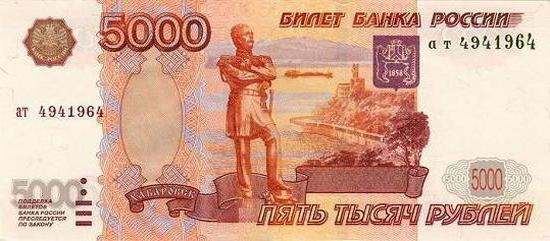
On the back you can see the bridge across the Amur (by the way, the length of the architectural structure is almost 3 kilometers). A whole museum is dedicated to this object in the city, because it was the completion of the construction of the longest road in the world - the Trans-Siberian Railway.
Ten thousand rubles
All of the above banknotes of Russia are already involved in circulation, except for banknotes with a face value of 10,000 rubles. It is still unknown whether they will release it, because, as analysts suggest, inflation of 2% is required to introduce a bill into circulation. But while its level exceeds the necessary mark and still continues to grow.
A mockup of a Russian banknote with a face value of 10,000 rubles is already under development. It is assumed that the artists will stop at the symbols of Crimea and Sevastopol. Perhaps, following the tradition of presenting Christian shrines on money, the Vladimir Cathedral from the city of Khersones will be printed on a new bill. The general idea of Russian lawmakers is to devote a bill to the merger of the Russian Federation and Crimea.
One hundred rubles (Sochi)
In 2014, lawmakers had two reasons to issue new notes. The first is the return of Crimea to Russia. The second reason was the world events in Sochi. A banknote of 100 rubles has become a jubilee, has sold a limited edition, and now it is not easy to find in circulation.
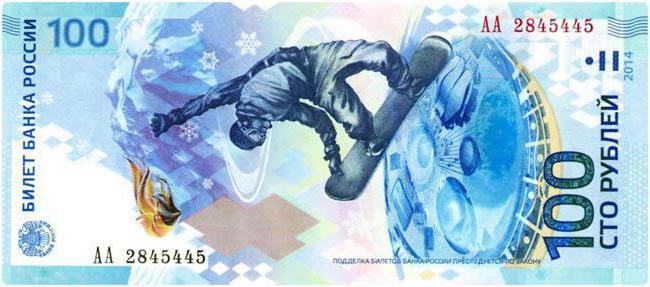
A flying snowboarder is printed on a bright blue background as a symbol of the Winter Olympics. His flight is captured over sports facilities. The reverse of the bill is represented by Fisht Stadium and the magnificent Firebird from a fairy tale.
One hundred rubles (Crimea and Sevastopol)
The desire to capture memorable events related to the Crimea and Sevastopol on banknotes was so great that the Central Bank did not wait for inflation to decline and still issued banknotes with images of significant places on the peninsula. A banknote of 100 rubles was issued in a limited edition on December 22, 2015.
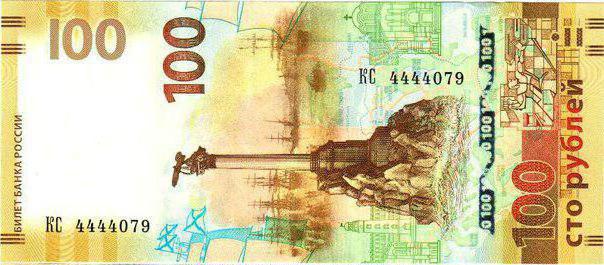
The "face" of the banknote is reserved for the symbols of Sevastopol. The key place in the composition is occupied by the Monument to the Scuttled Ships. This monument displays significant events in the history of Sevastopol. In the background are the outlines of the ships of the Russian squadron on the Sevastopol roadstead from the painting of the same name by Aivazovsky.
The reverse of the banknote is dedicated to the Crimean peninsula. The central place is given to the "Swallow's Nest" - a visiting card of the Crimea. In the background are several natural monuments and historical monuments. On both sides of the banknote grapevines twist, which is also symbolic, because the peninsula is famous for its vineyards and excellent wine.
Where can I find notes on the events of 2014?
A series of notes dedicated to the reunification of Russia with the Crimea will repeat the history of the “Sochi” 100 rubles. In free circulation, you can not see them. Banknotes distributed through commercial banks of Russia, where they quickly dispersed as souvenirs and gifts. A few days later, the banknotes were in the personal collections of bonists and numismatists or remained in the memory of bank employees and their customers. So you should not expect that commemorative 100 rubles will someday be given for change in the store.
The price of memorable money has not yet been established, however, today they can be purchased through specialized online stores or on collector forums. But the cost of such samples will be 30% more than the nominal.
